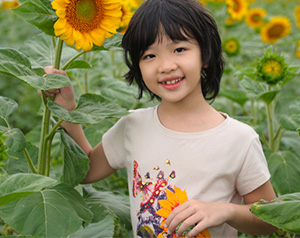 Thousands of people across the United States gathered last month in cities such as Chicago, San Francisco, and Seattle to celebrate the Lunar New Year. The zodiac animal symbolizing this year is yang in Mandarin, which can mean sheep, goat, or ram. There has been a lot of discussion about the English translation. The English translation varies, scholars say, depending on the context and the lifestyle in different areas of the world, illustrating the richness and complexity of this holiday and how it is celebrated differently by people of diverse linguistic and cultural backgrounds.
Thousands of people across the United States gathered last month in cities such as Chicago, San Francisco, and Seattle to celebrate the Lunar New Year. The zodiac animal symbolizing this year is yang in Mandarin, which can mean sheep, goat, or ram. There has been a lot of discussion about the English translation. The English translation varies, scholars say, depending on the context and the lifestyle in different areas of the world, illustrating the richness and complexity of this holiday and how it is celebrated differently by people of diverse linguistic and cultural backgrounds.
National Center for Education Statistics projects that by 2023 the percentage of White students in public school enrollment will decrease to less than half, whereas Hispanics are projected to constitute 30% and Asian/Pacific Islanders 5% of the enrollment. That means more than half of our students in public schools will come from a family where two or more languages are spoken and holidays from two or more cultures are celebrated. In response to this trend of shifting student demographics, teachers need to adjust their teaching to be culturally relevant. Still, we seem to add just a few “multicultural” books to our libraries and overlook the richness in English learners’ diverse life experiences and continue to view these students from a deficit perspective.
A few years ago, I met “Johnny,” a new student in a public school. Johnny’s family came from Southeast China and had just moved to a Midwest town. Johnny’s parents worked in a local Chinese restaurant and did not speak much English. New to the class, Johnny was considered “behind” on the basis of a reading test and needed extra English language learning. On the basis of my observation of the class, Johnny appeared very shy and lacked confidence. A wonderful opportunity to engage him presented itself when the class was about to have a cultural lesson on the Lunar New Year; however, Johnny and his parents were not invited to be involved in the lesson preparation or implementation.
This experience brought to mind the concept of “funds of knowledge,” created by Luis C. Moll and other scholars: knowledge and skills that are developed historically, socially, and culturally in individuals and households. Johnny’s family possessed rich experiences and knowledge about Lunar New Year, which would have made the lesson on the festival more relevant and authentic for his classmates. However, their funds of knowledge went unnoticed and were obscured by the predominant, deficit view that Johnny was behind and his parents did not speak much English.
In that same class, there were two students of Korean background, for whom Lunar New Year is also a major festival. I cannot help wondering what it might have been like if Johnny, his Korean peers, and all of their parents were given the opportunity to share how the festival was celebrated at their homes. They could have shared their New Year traditions by showing artifacts, preparing traditional food, and telling stories of past celebrations. Perhaps Johnny would be willing to show his hong bao (lucky money in red envelope) and tell the class its meaning and significance. To celebrate linguistic diversity, they could have taught the class New Year greetings in Korean and Mandarin. The other students in Johnny’s class could have experienced a Lunar New Year cultural lesson far more memorable in addition to reading multicultural picture books, such as Sam and the Lucky Money by Karen Chinn or New Clothes for New Year's Day by Hyun-Joo Bae.
Moreover, these children could have come to appreciate the funds of knowledge inherent in their classmates from different backgrounds, thereby building a more inclusive, stronger classroom community. In this way, student diversity may become as strength for teaching and learning.
In addition to “meeting the needs” of English learners, it is also time to purposefully invite students of diversity and their families to the classroom stage. We may be surprised by the content and the spark they will bring to our teaching and learning environment.
Hsiao-Chin Kuo is an assistant professor in Literacy Studies at Western Michigan University in Kalamazoo, MI. She has a Master’s degree in TESOL and a PhD in Literacy, Culture, and Language Education. Her research interests include multimodality and multiple literacies, literacy and language education for linguistic and cultural diversities, and partnership between school, home and communities.